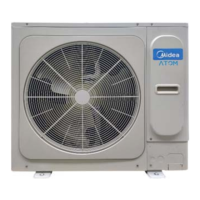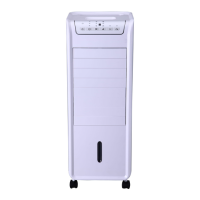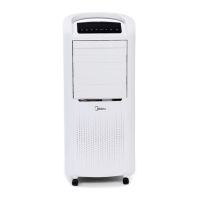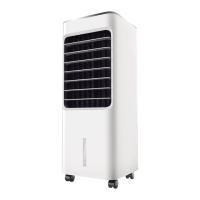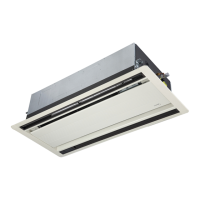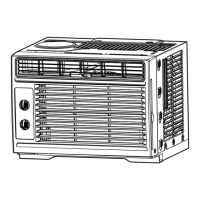Atom B Series VRF 50/60Hz
74
Midea Atom B Series Engineering Data Book
3 Refrigerant Piping Design
3.1 Design Considerations
Refrigerant piping design should take account of the following considerations:
The amount of brazing required should be kept to a minimum.
On the two inside sides of the first indoor branch joint (“A” in Figures 3-3.4 and Figure 3-3.5) the system should, as far
as possible, be equal in terms of number of units, total capacities and total piping lengths.
3.2 Material Specification
Only seamless phosphorus-deoxidized copper piping that complies with all applicable legislation should be used. Temper
grades and minimum thicknesses for different diameters of piping are specified in Table 3-3.1.
Table 3-3.1: Piping temper and thickness
Piping outer diameter
(mm)
Notes:
1. O: coiled piping;
2. 1/2H: straight piping.
3.3 Connection Method
Various piping patterns can be selected, such as out from the front, the back the side, and undersurface, etc. (The follow
display the locations of several piping and wiring knock-off interfaces)
Table 3-3.2: The indoor and outdoor connecting pipe interface
The connect methond of flaring
For the 48kBtu/h outdoor unit's back out pipe connection, connecting pipe
is suggestted to be used. For the 56kBtu/h outdoor unit's, connecting pipe is
suggestted to be used in all directions out pipe connection
Front out
pipe
Bottom out
pipe
Back out
pipe
Side out
pipe
Connecting Pipe
(Accessorry)
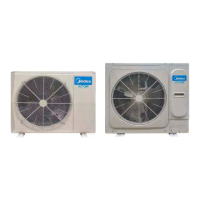
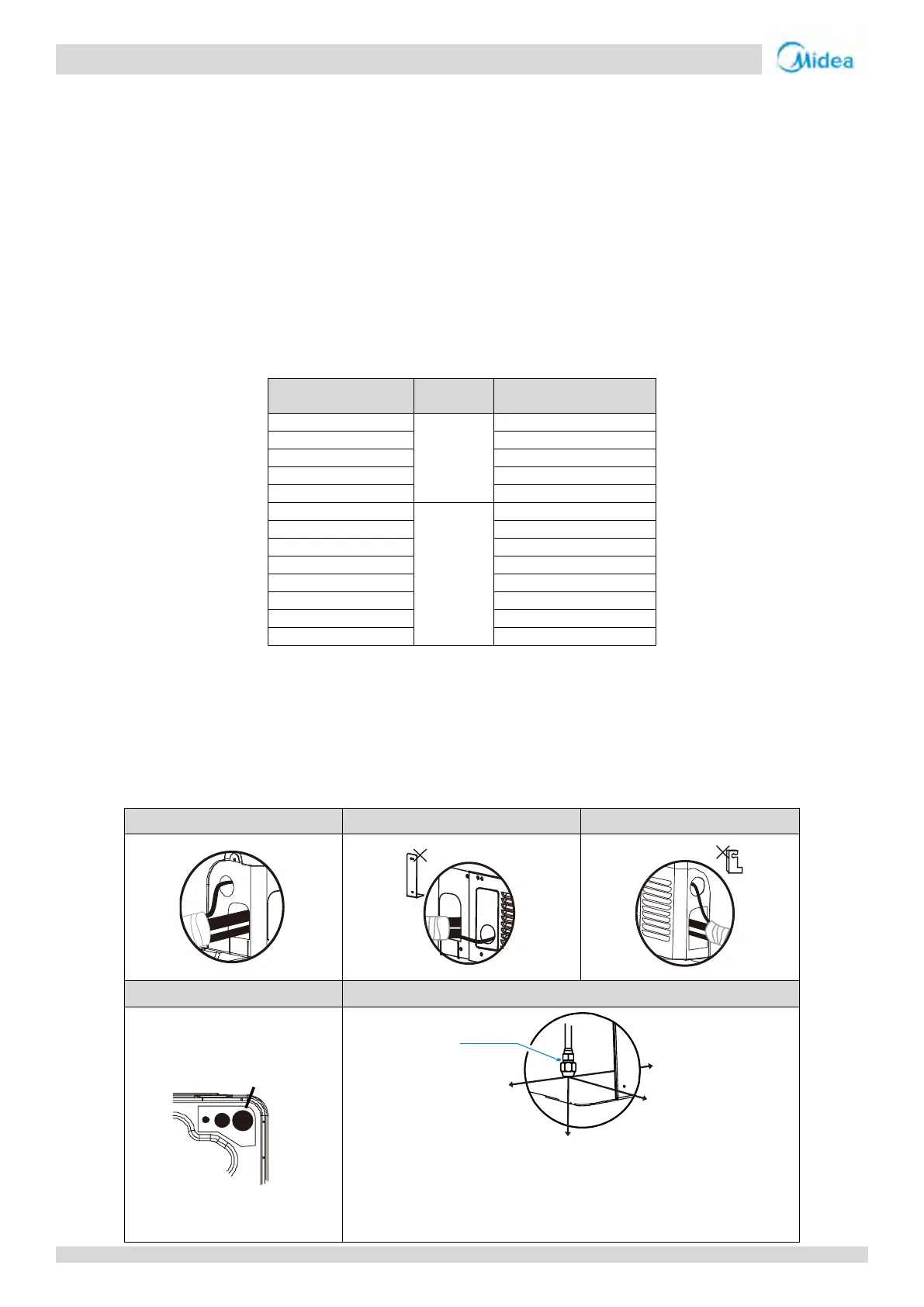